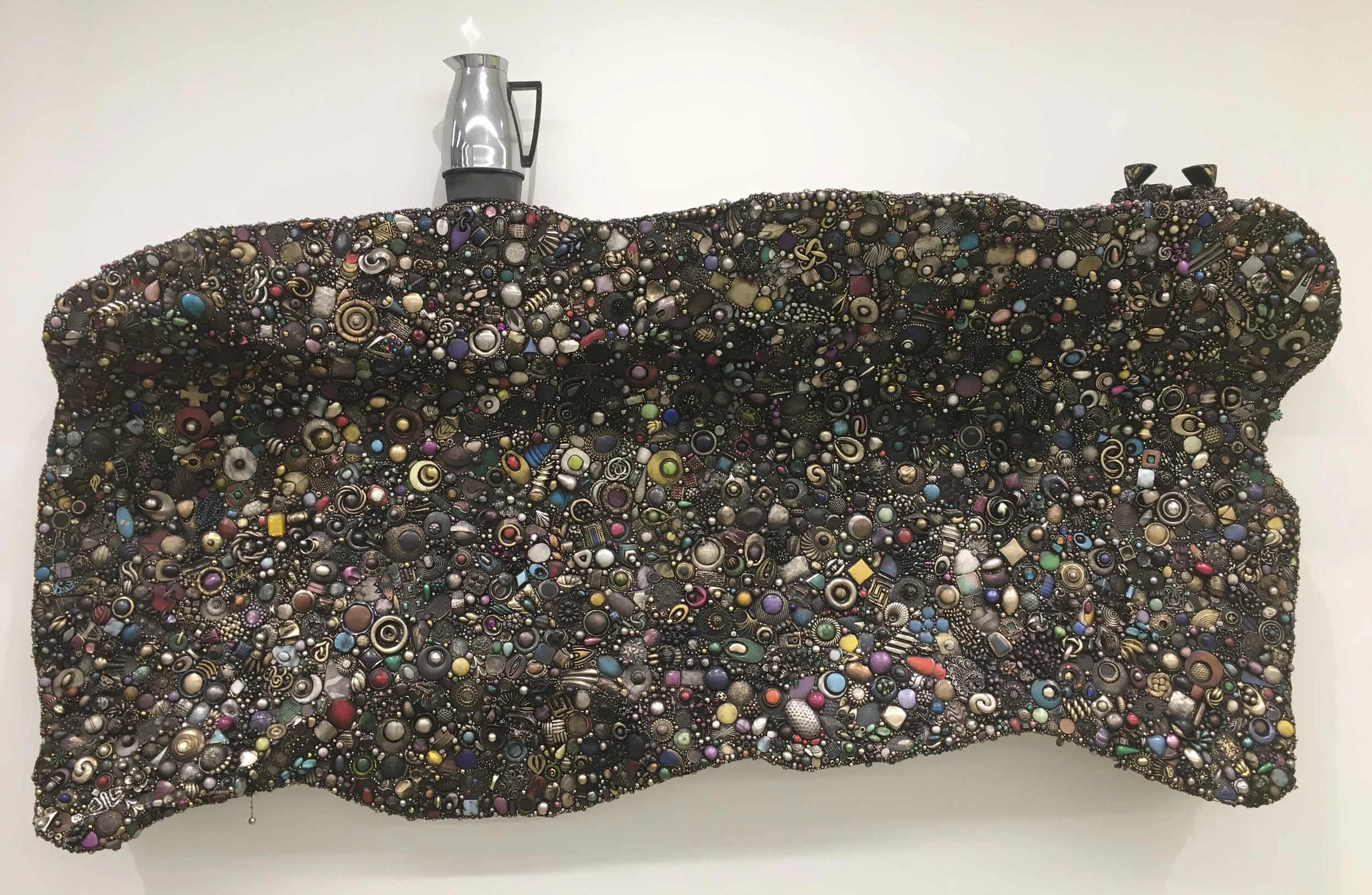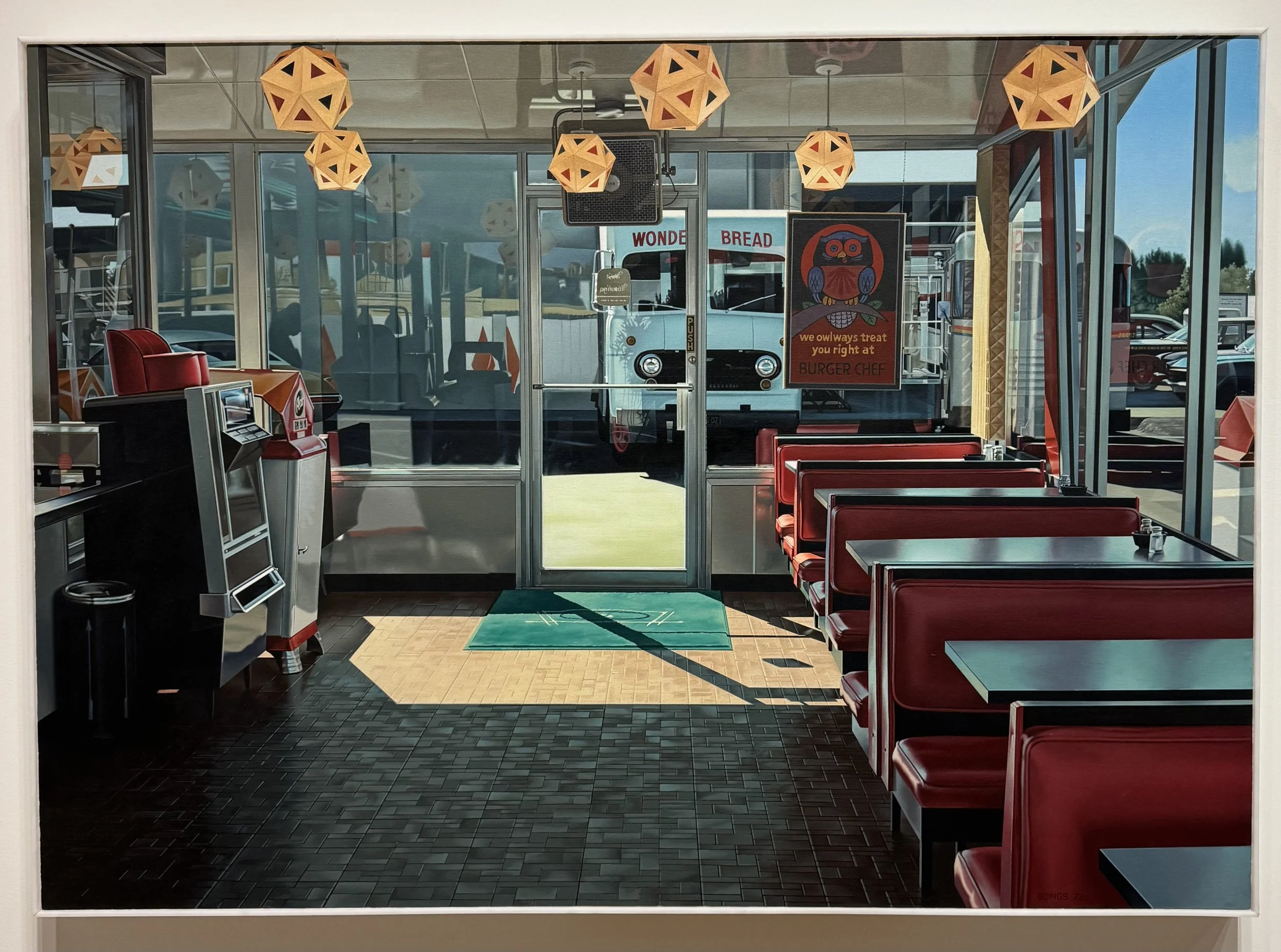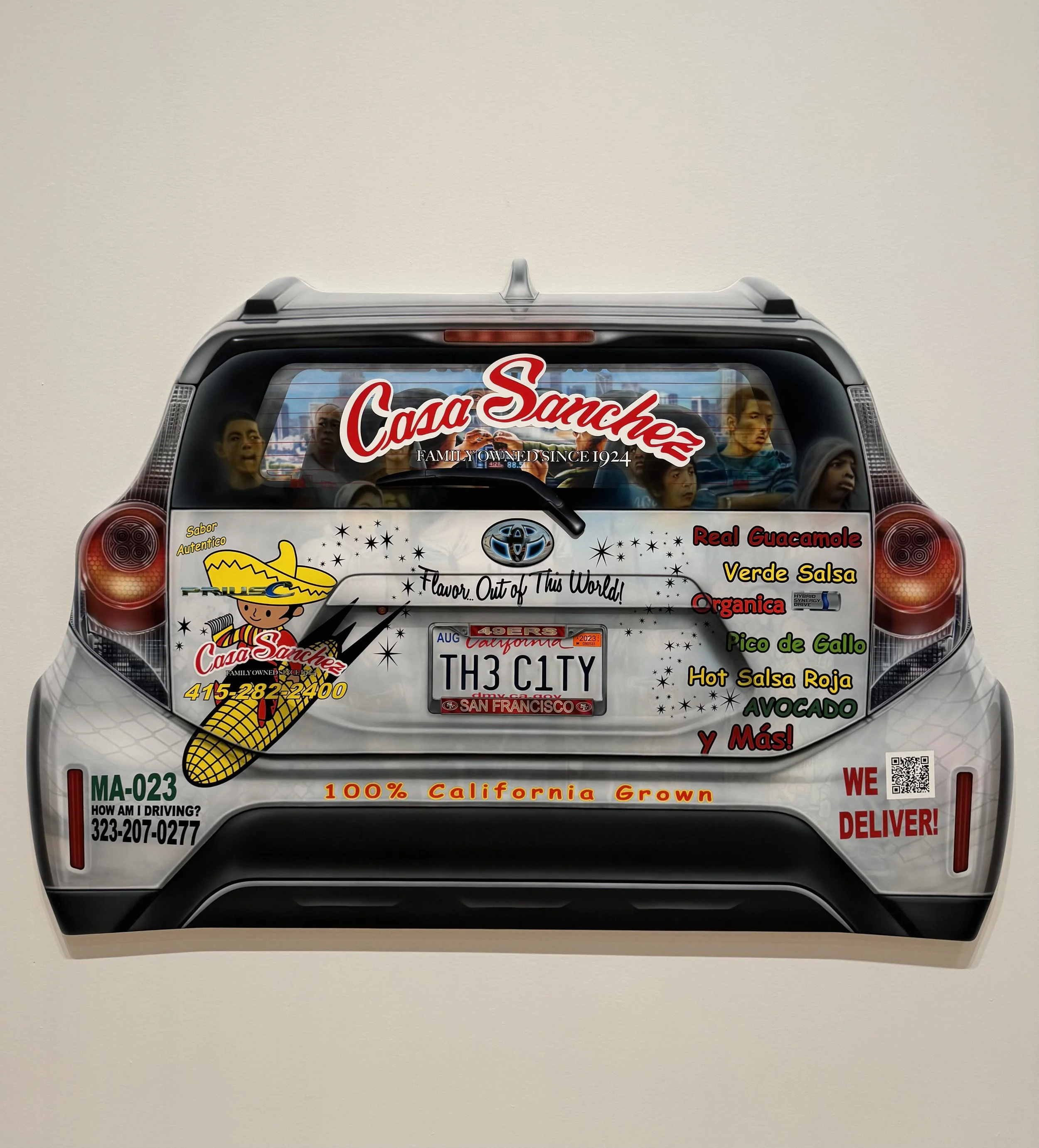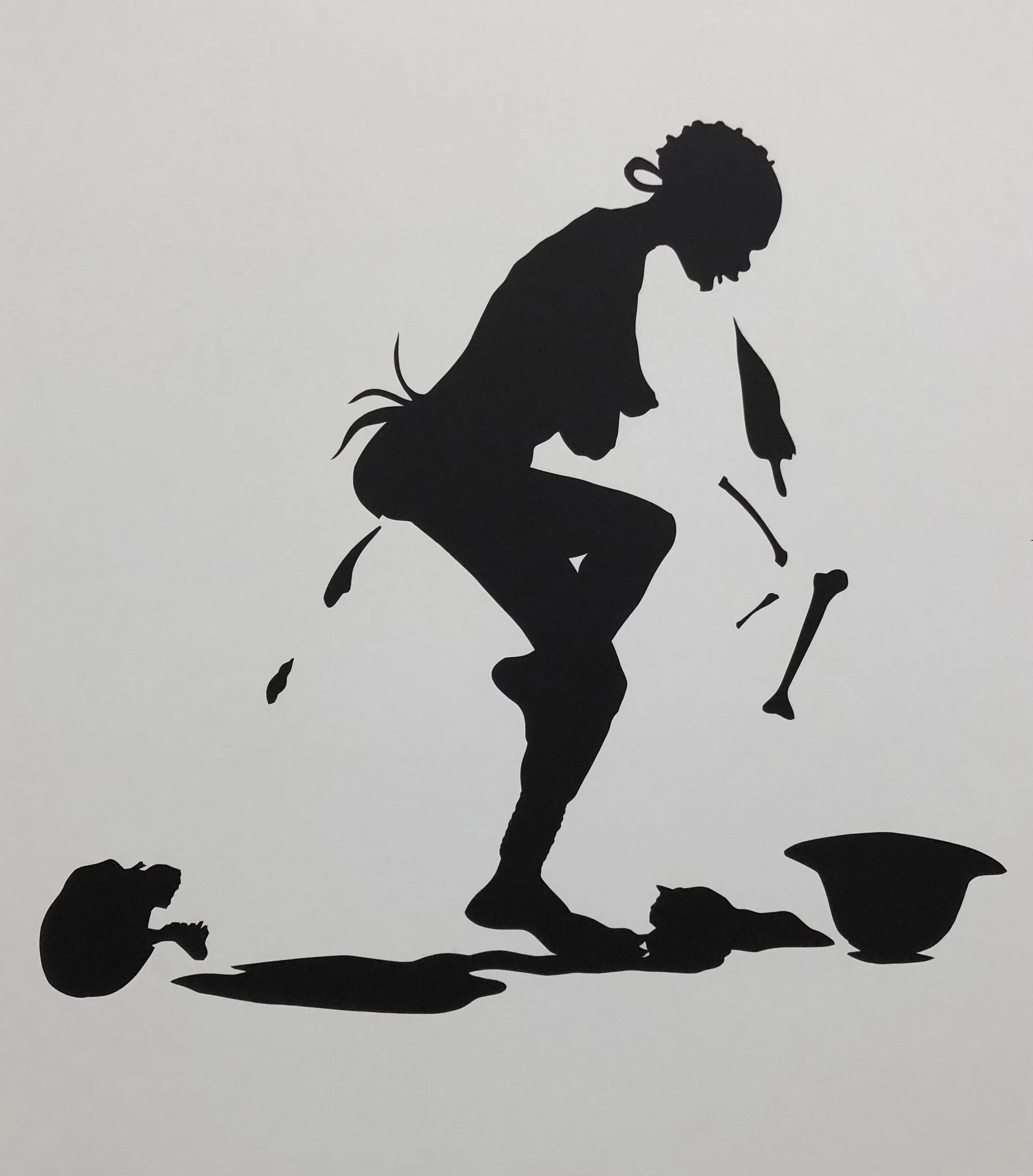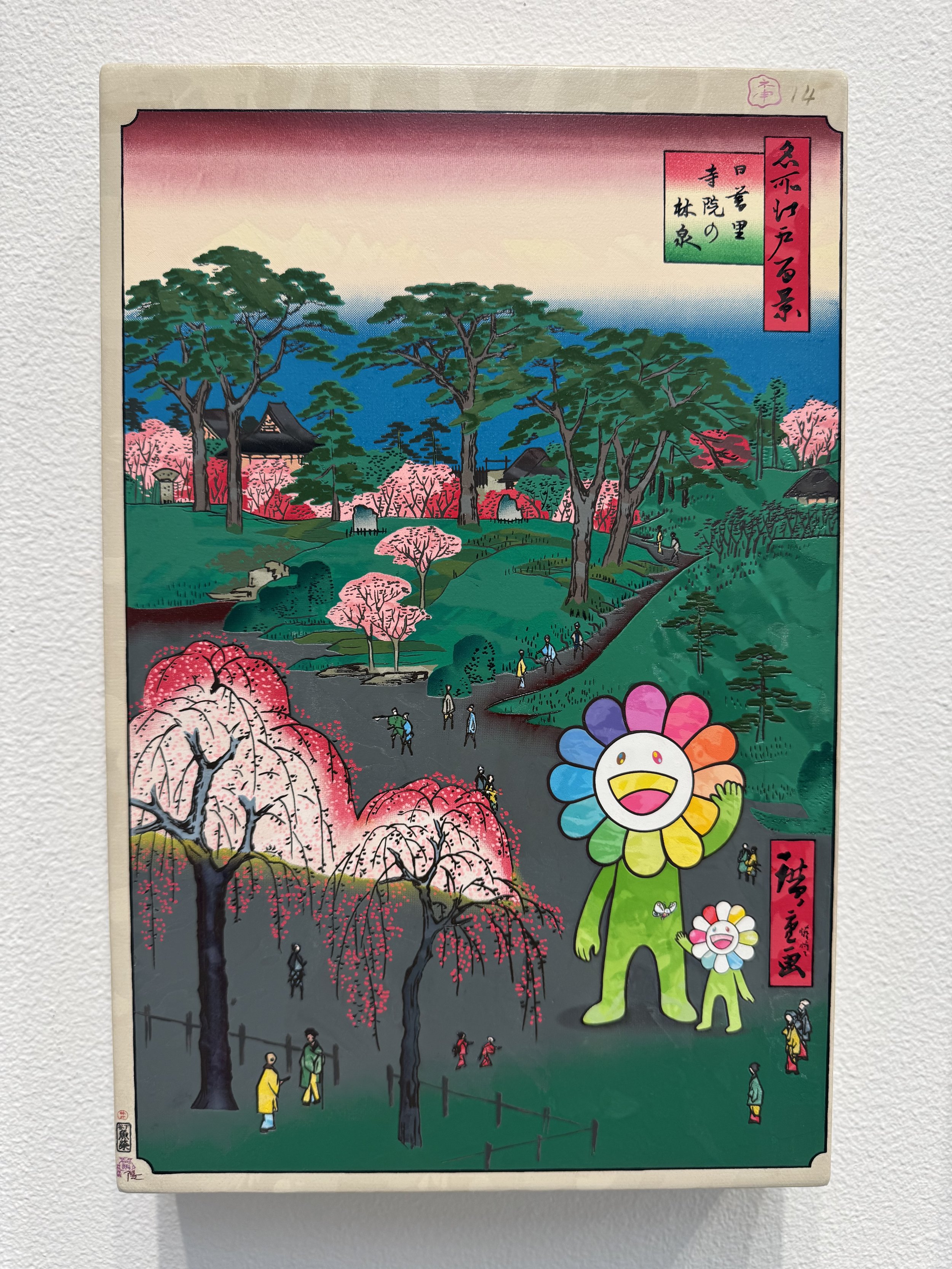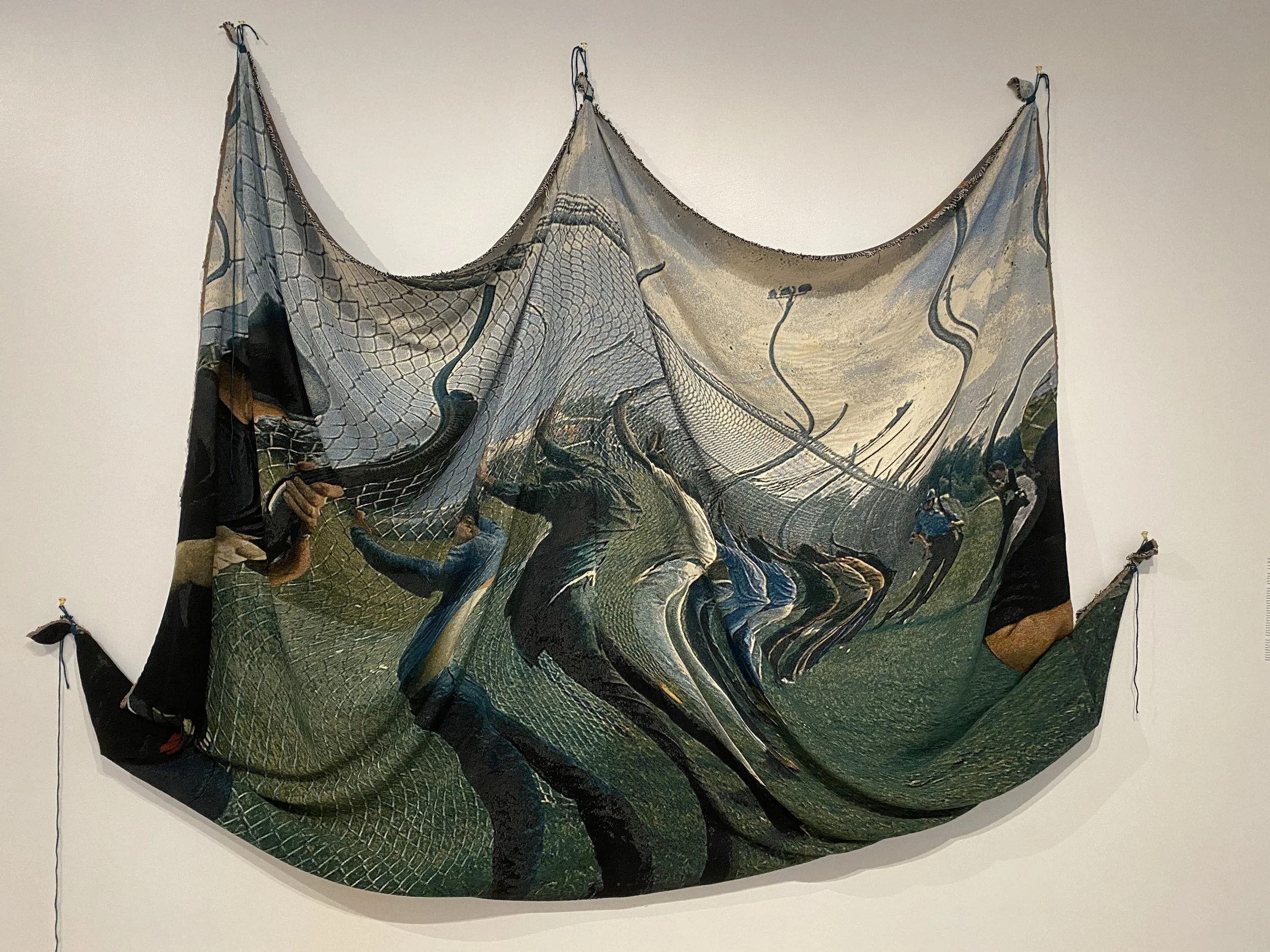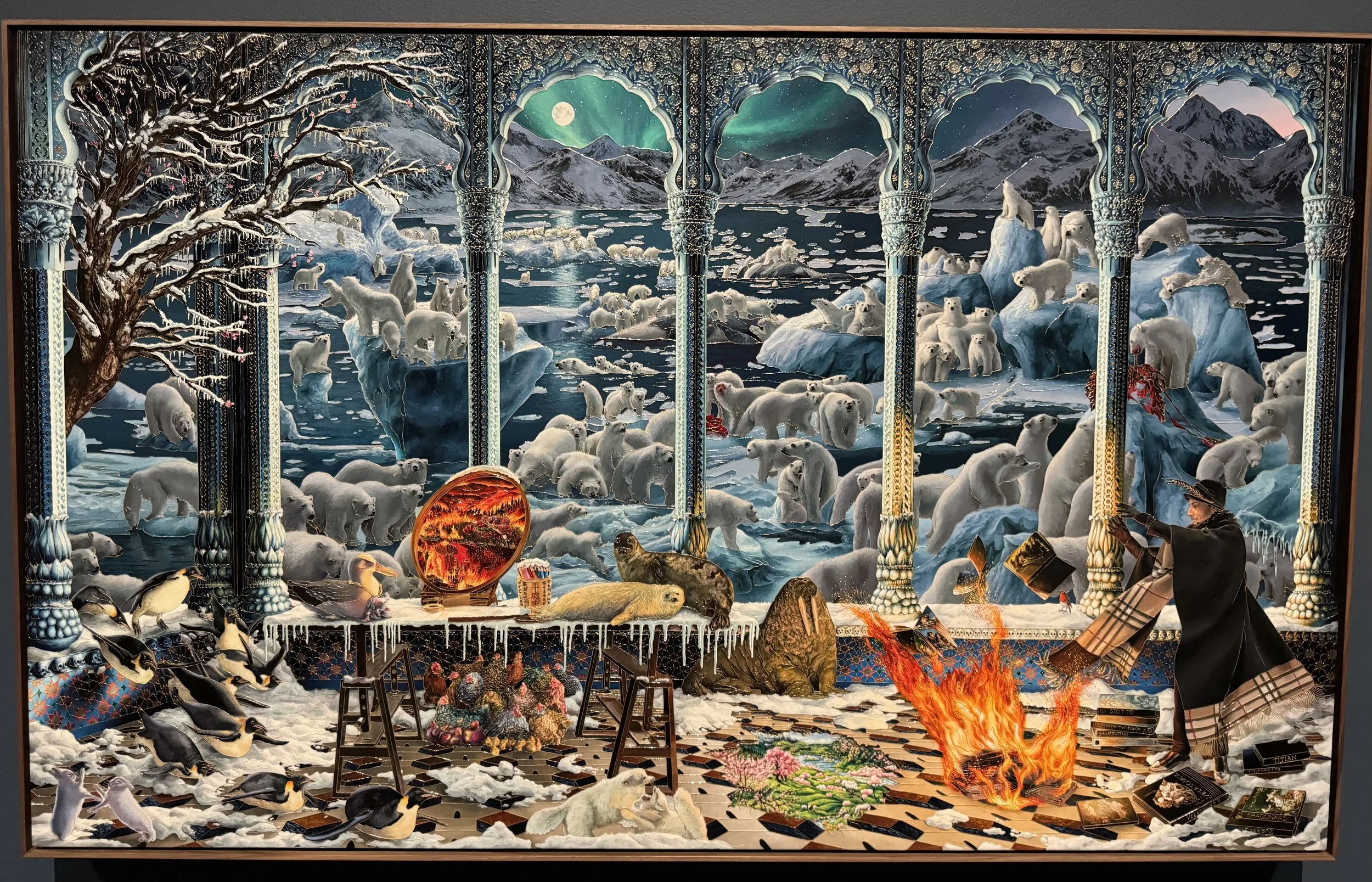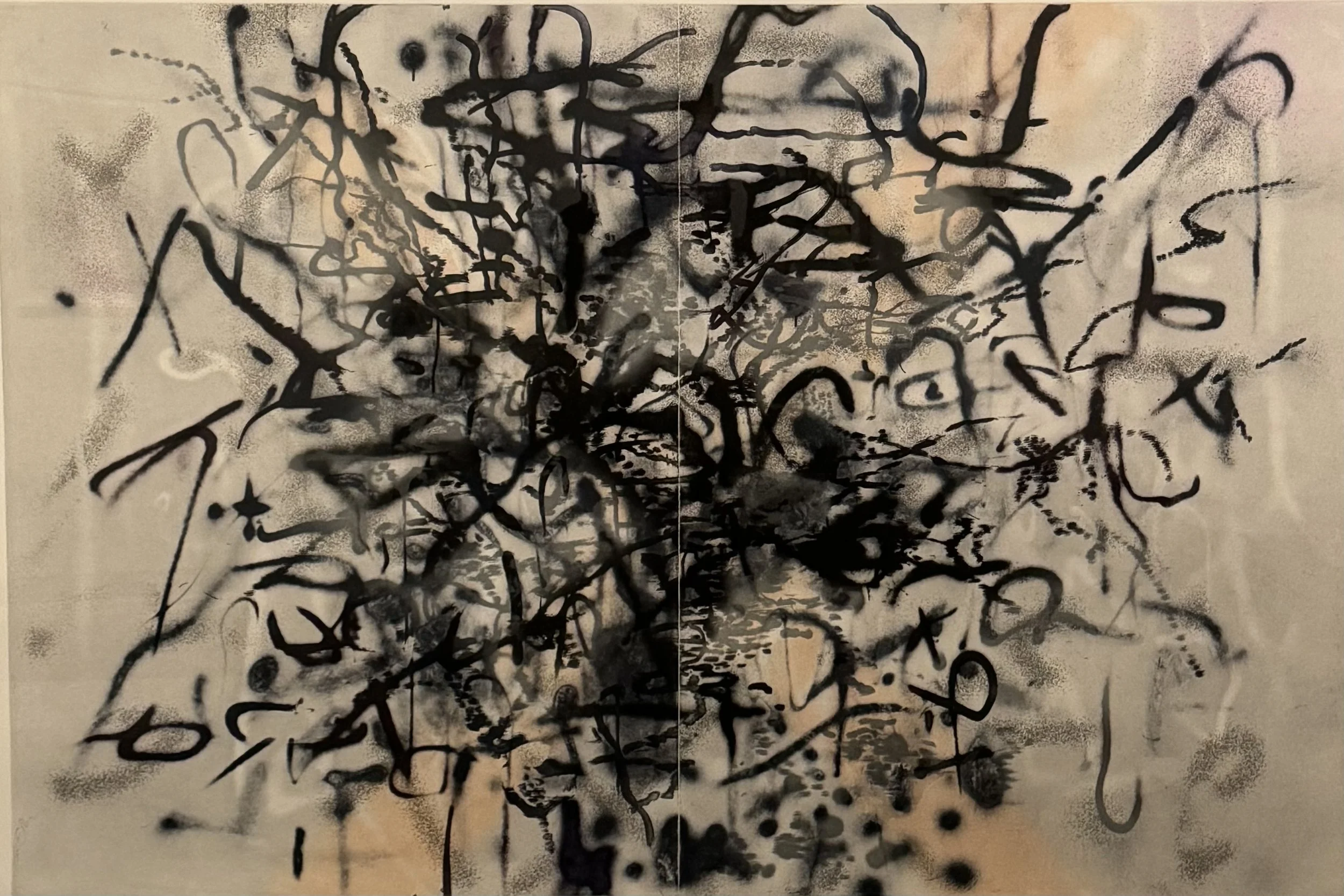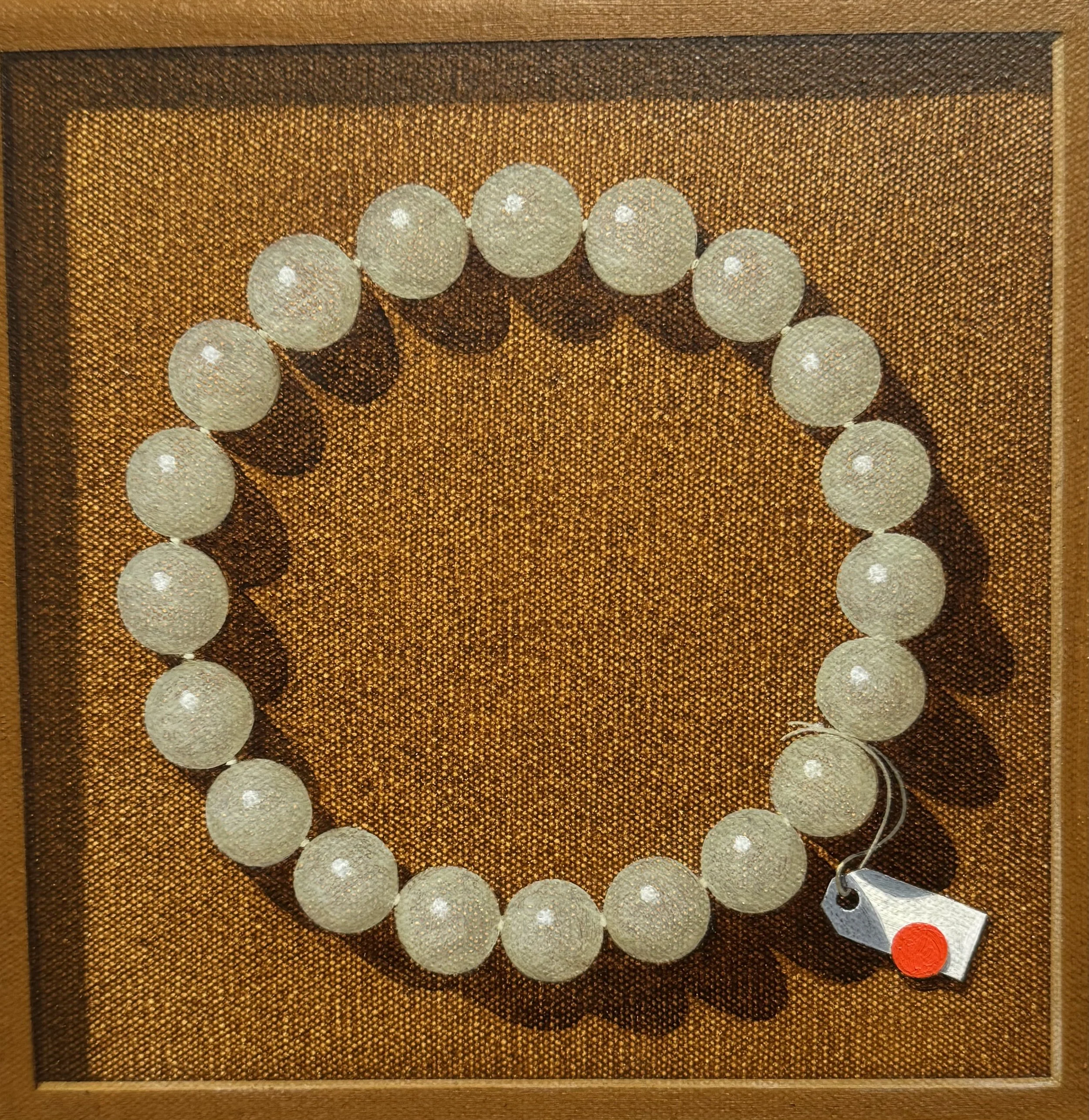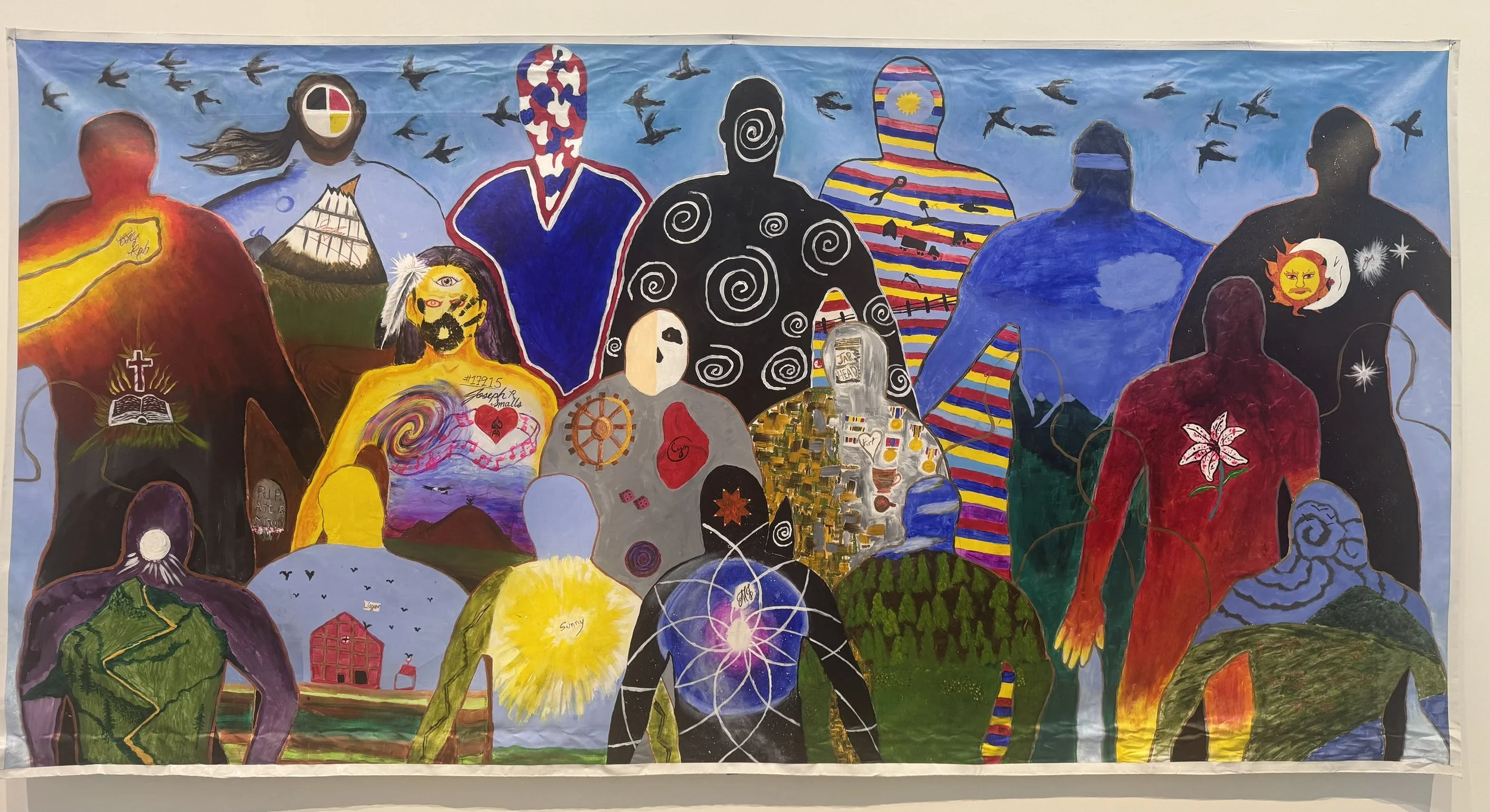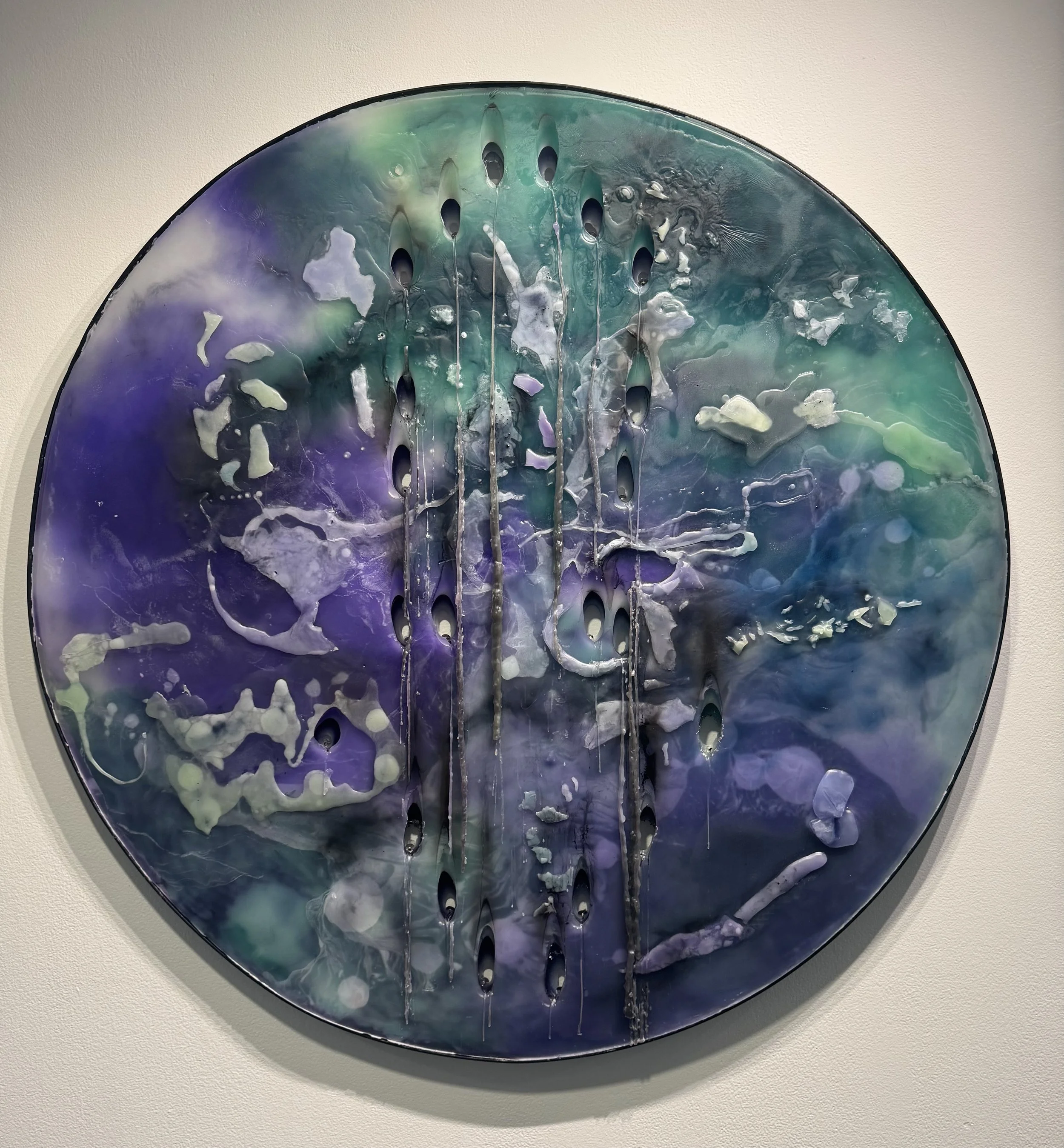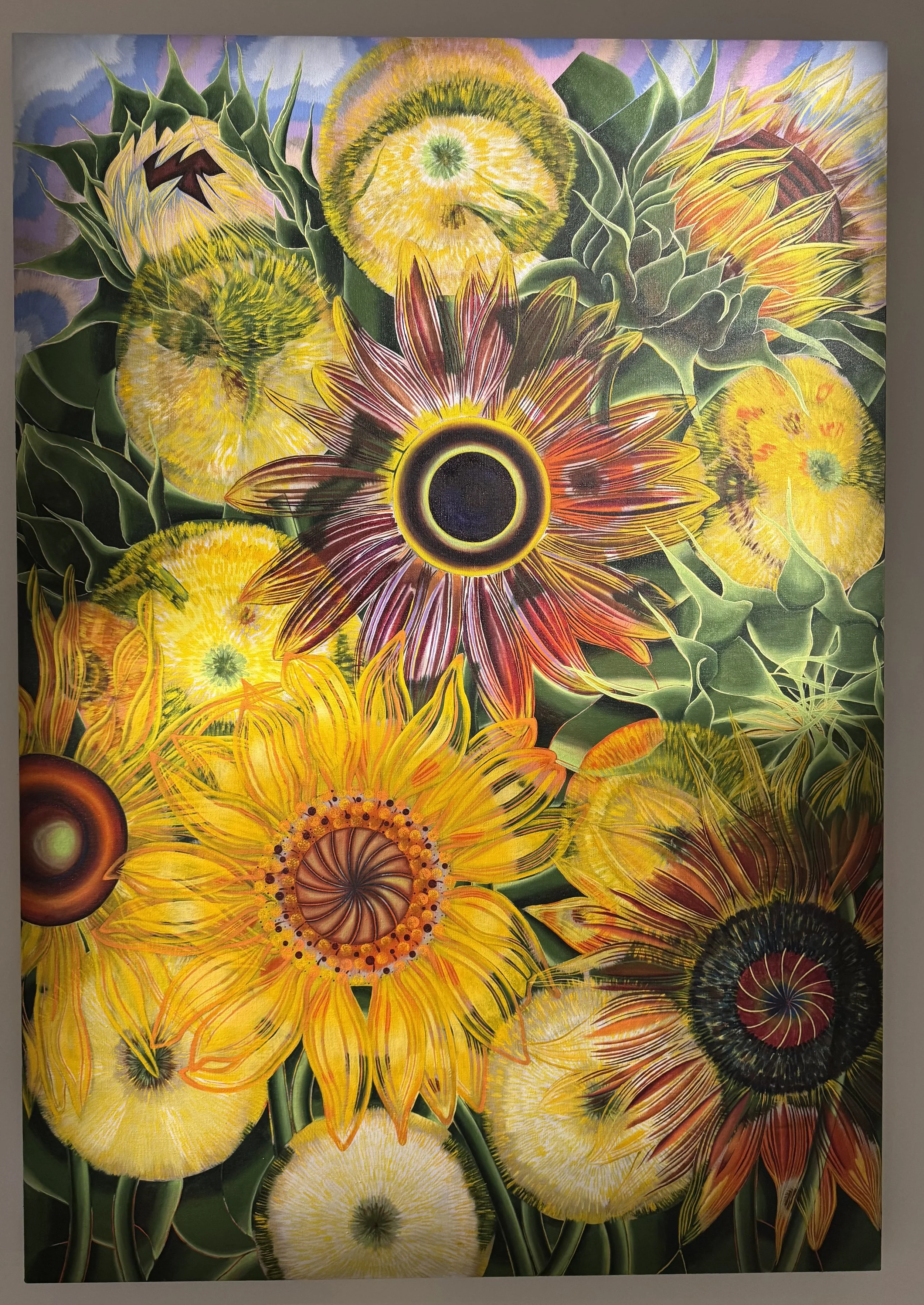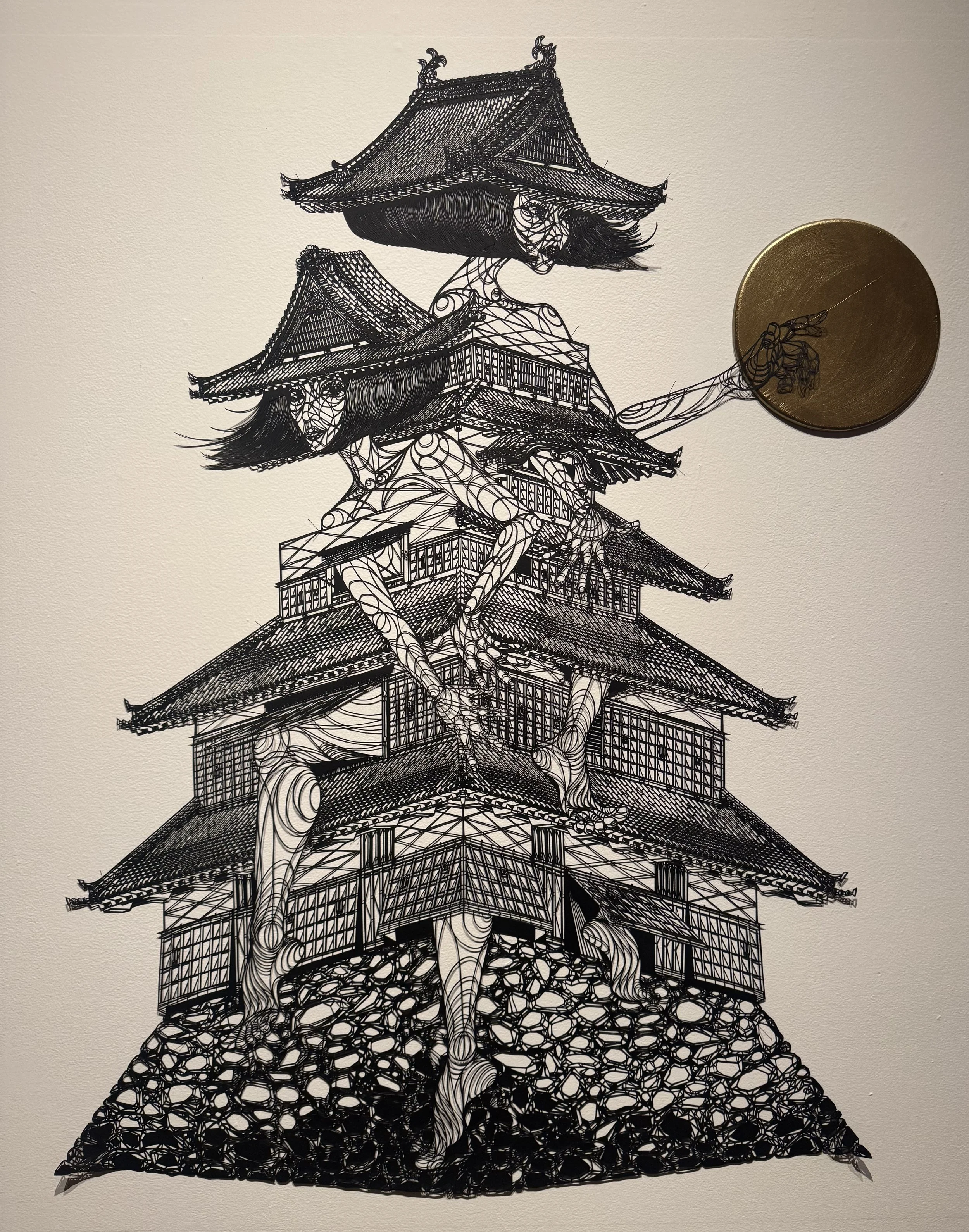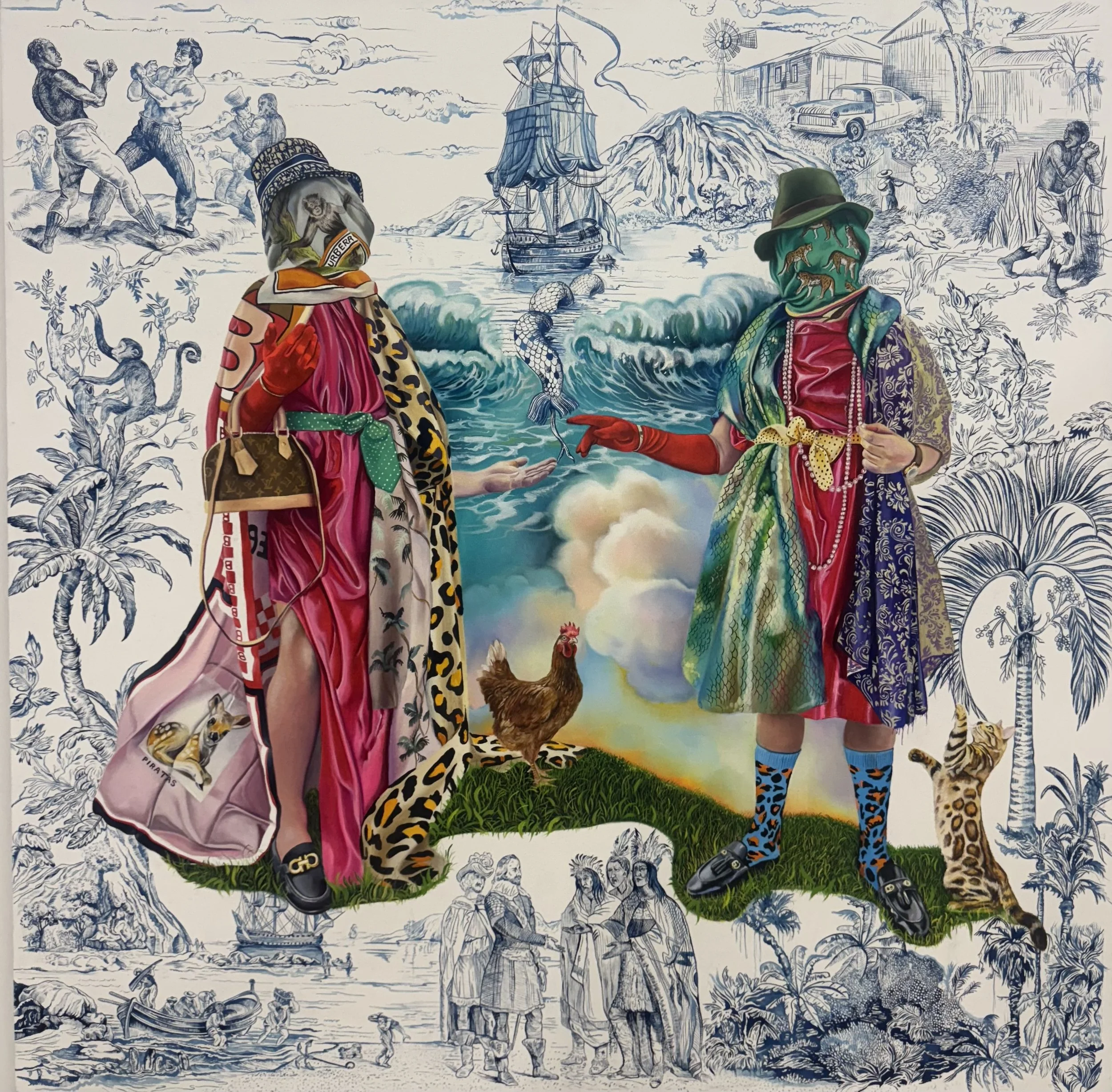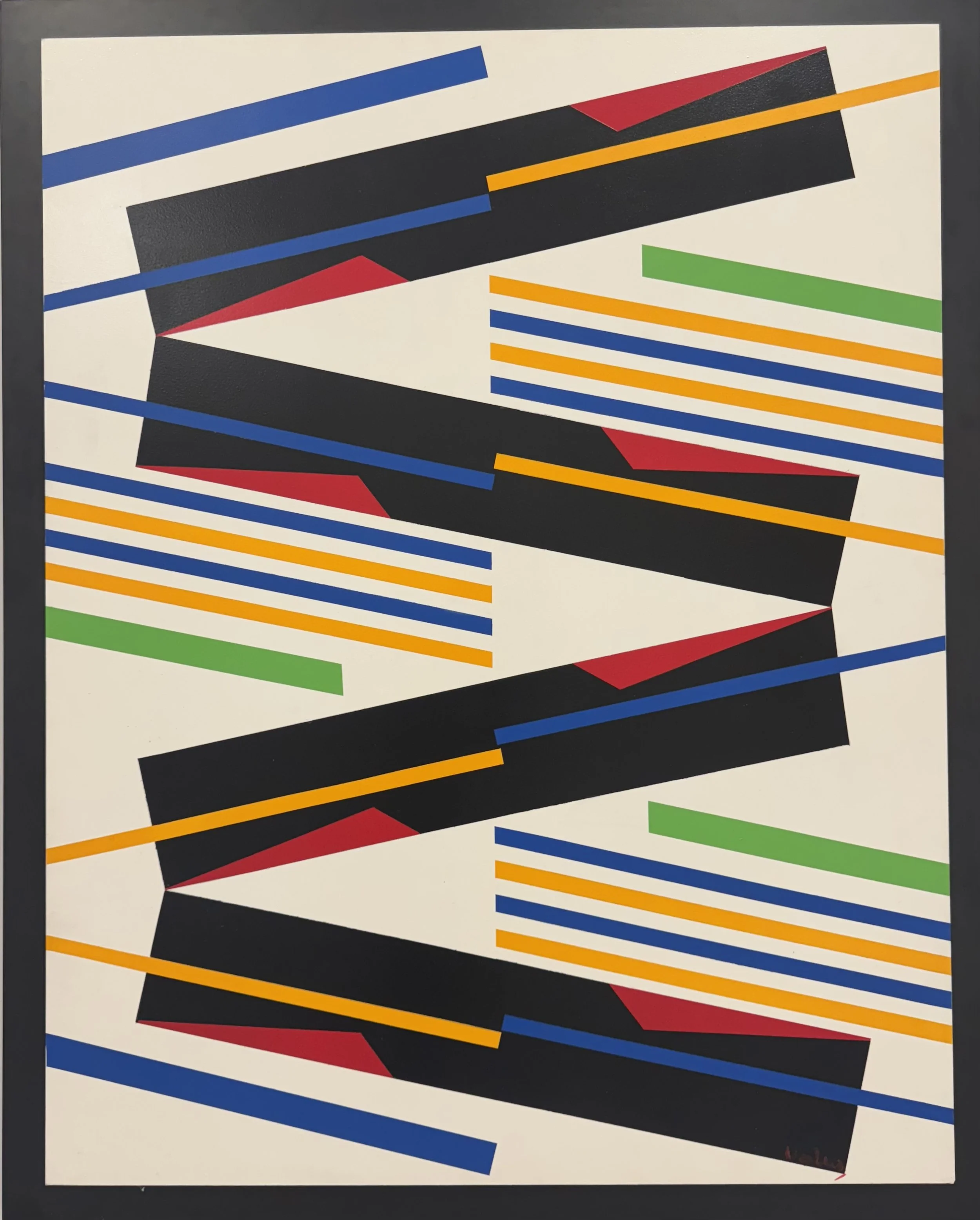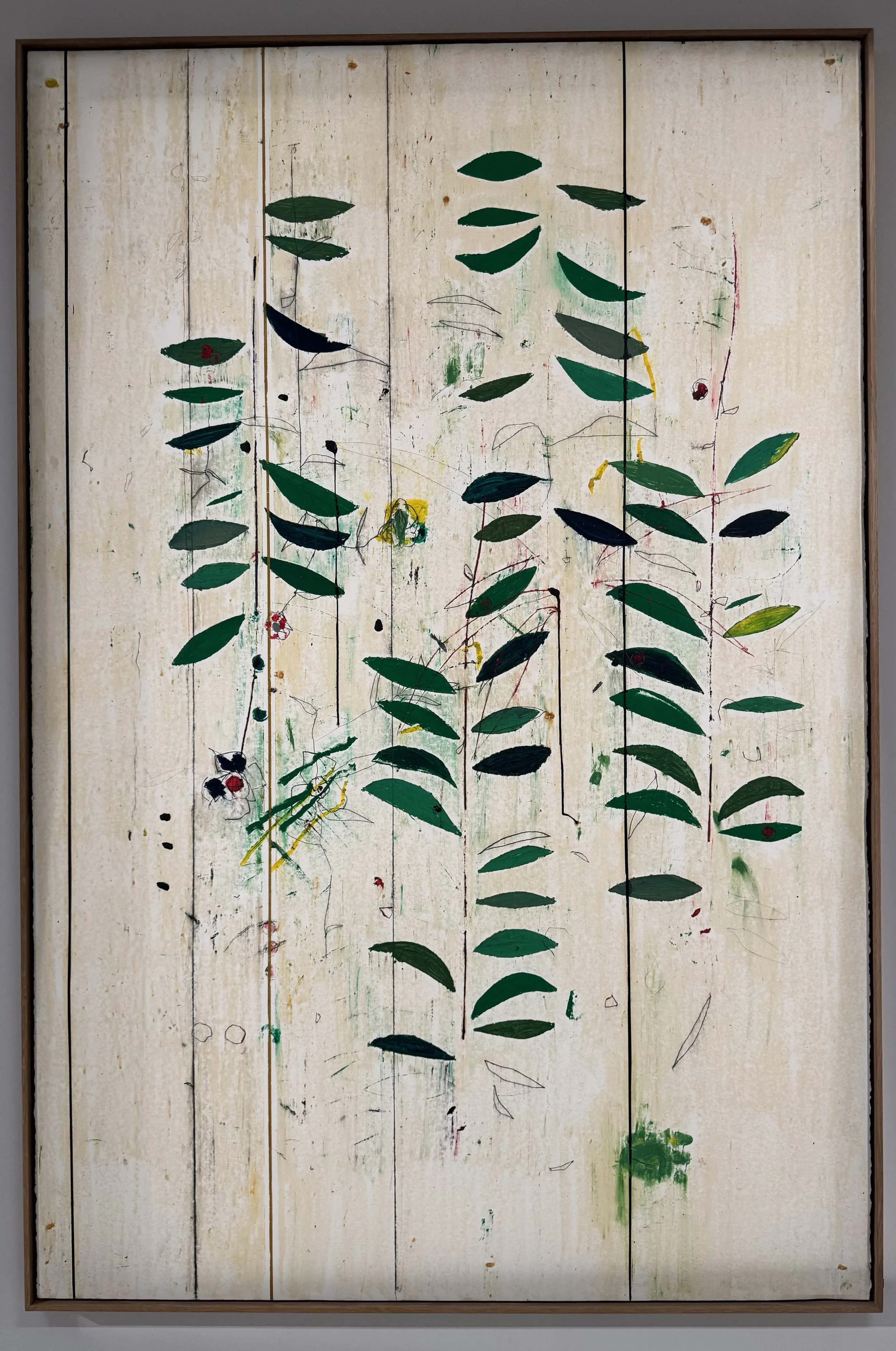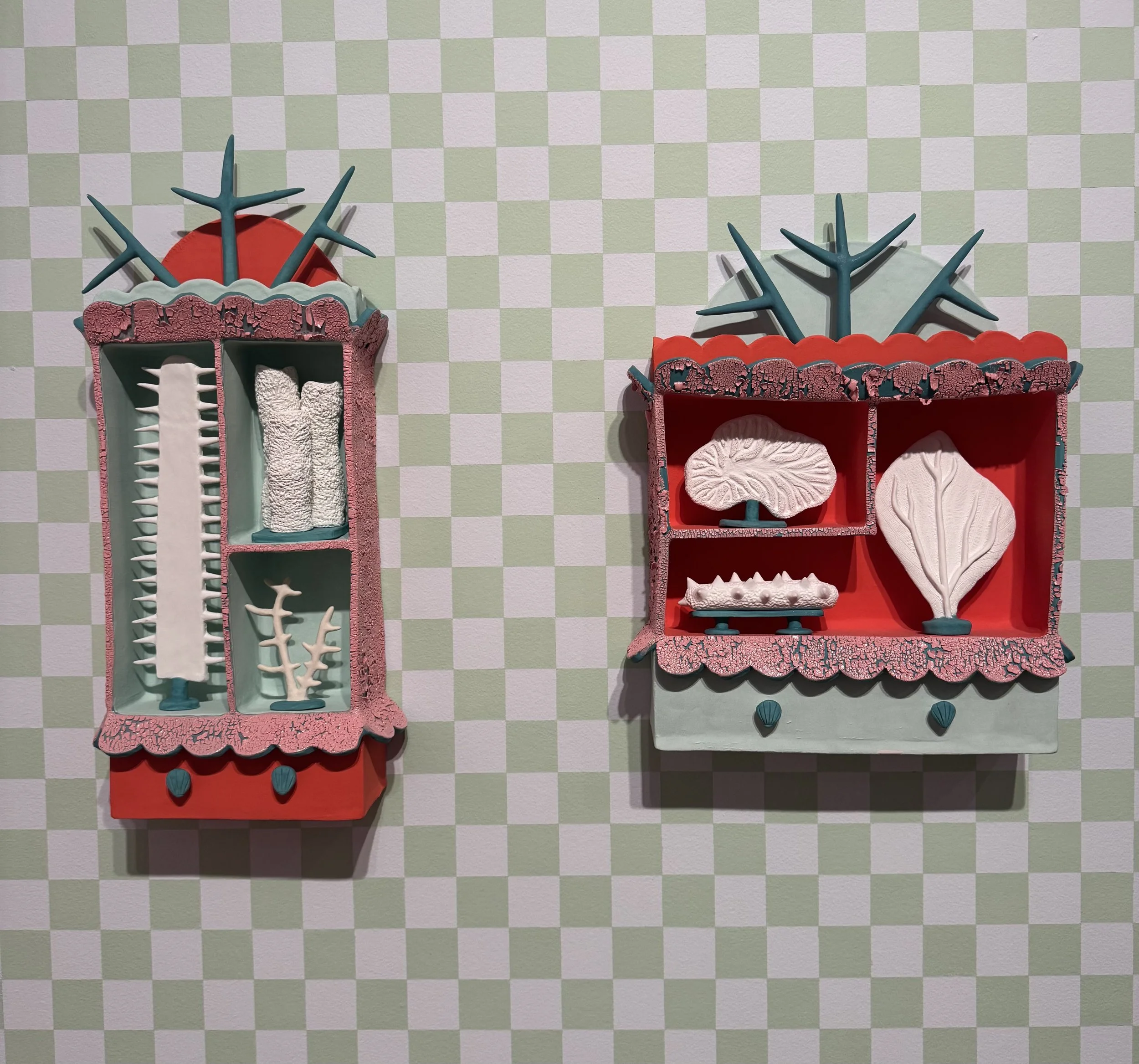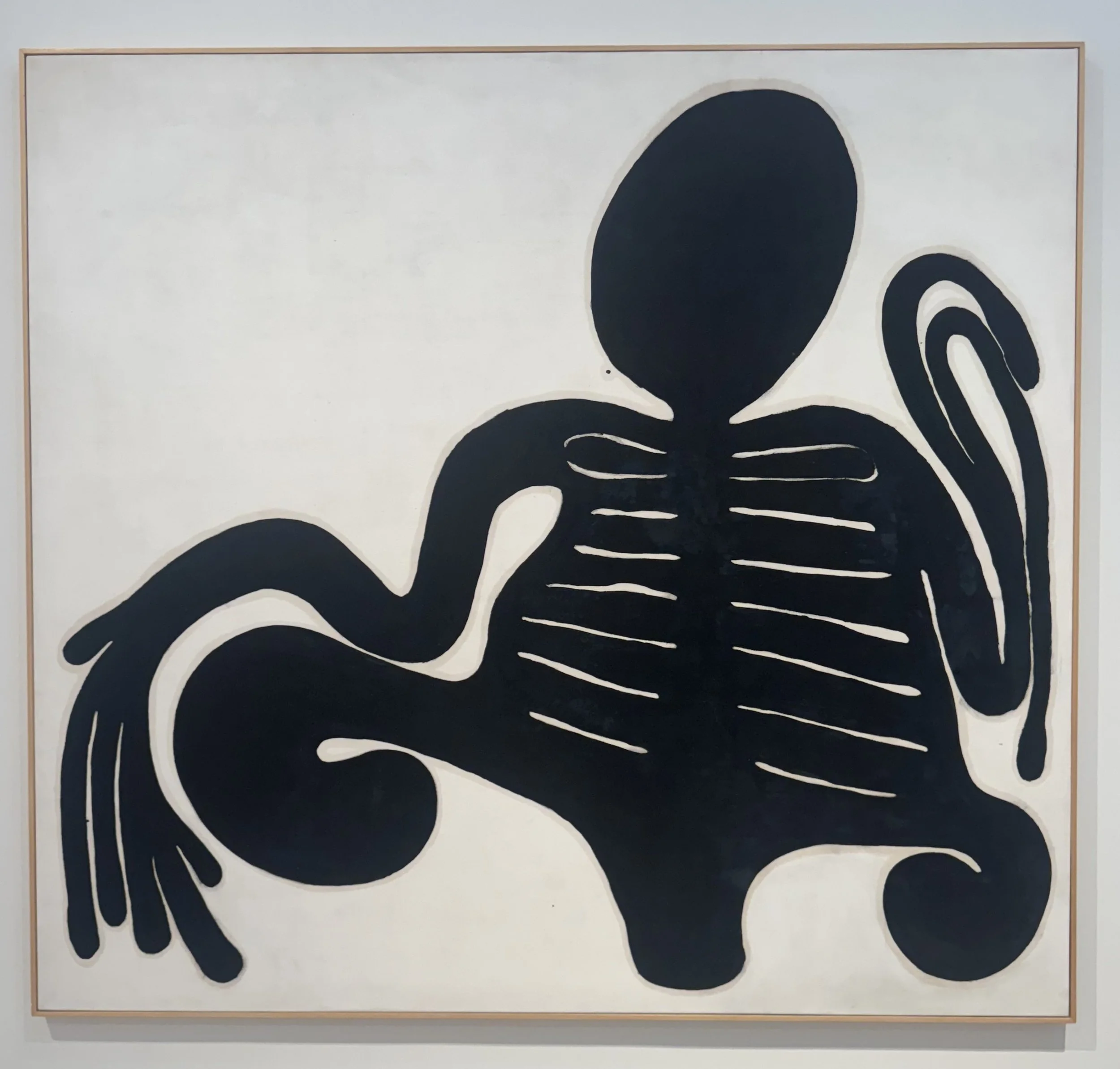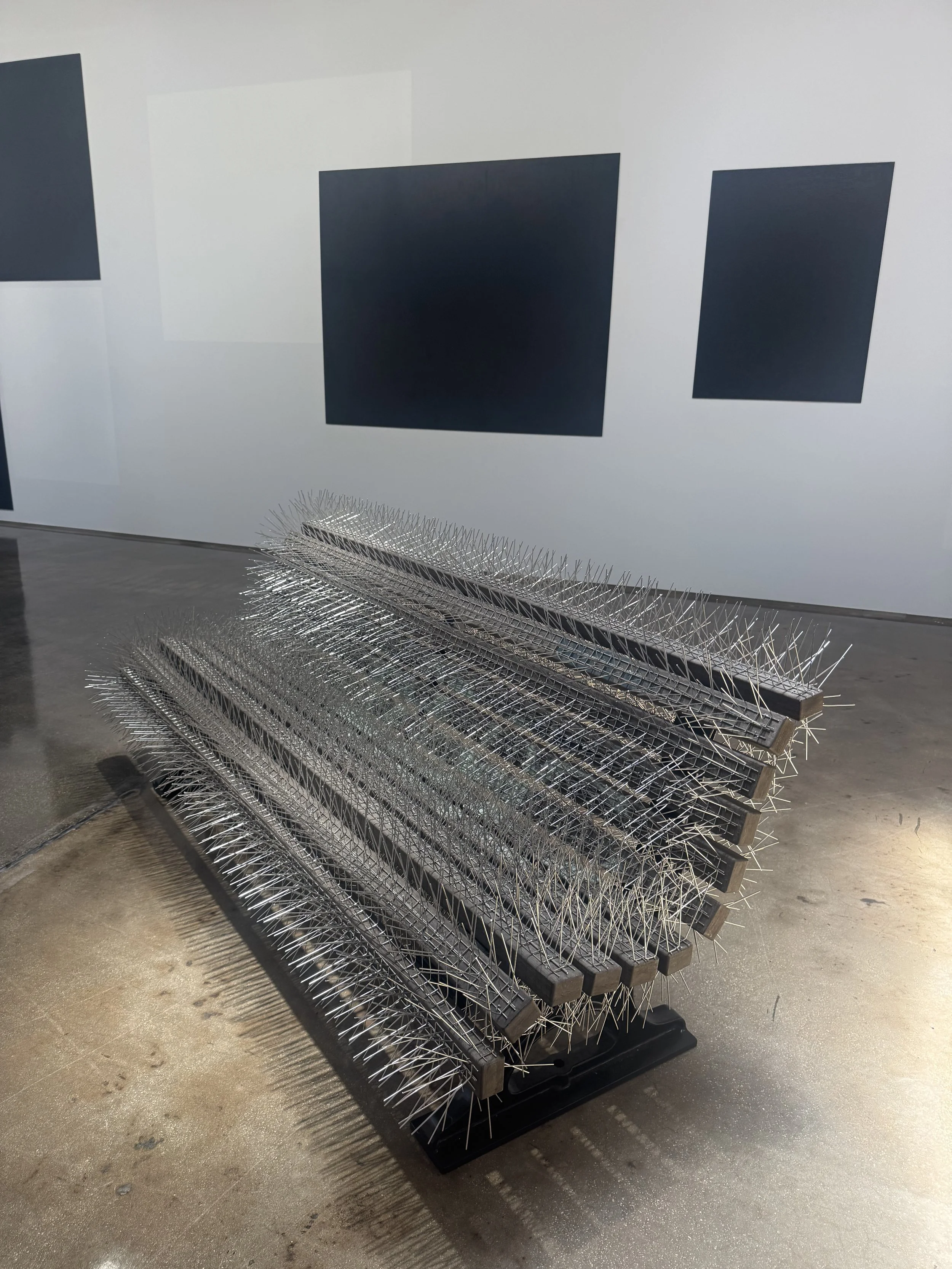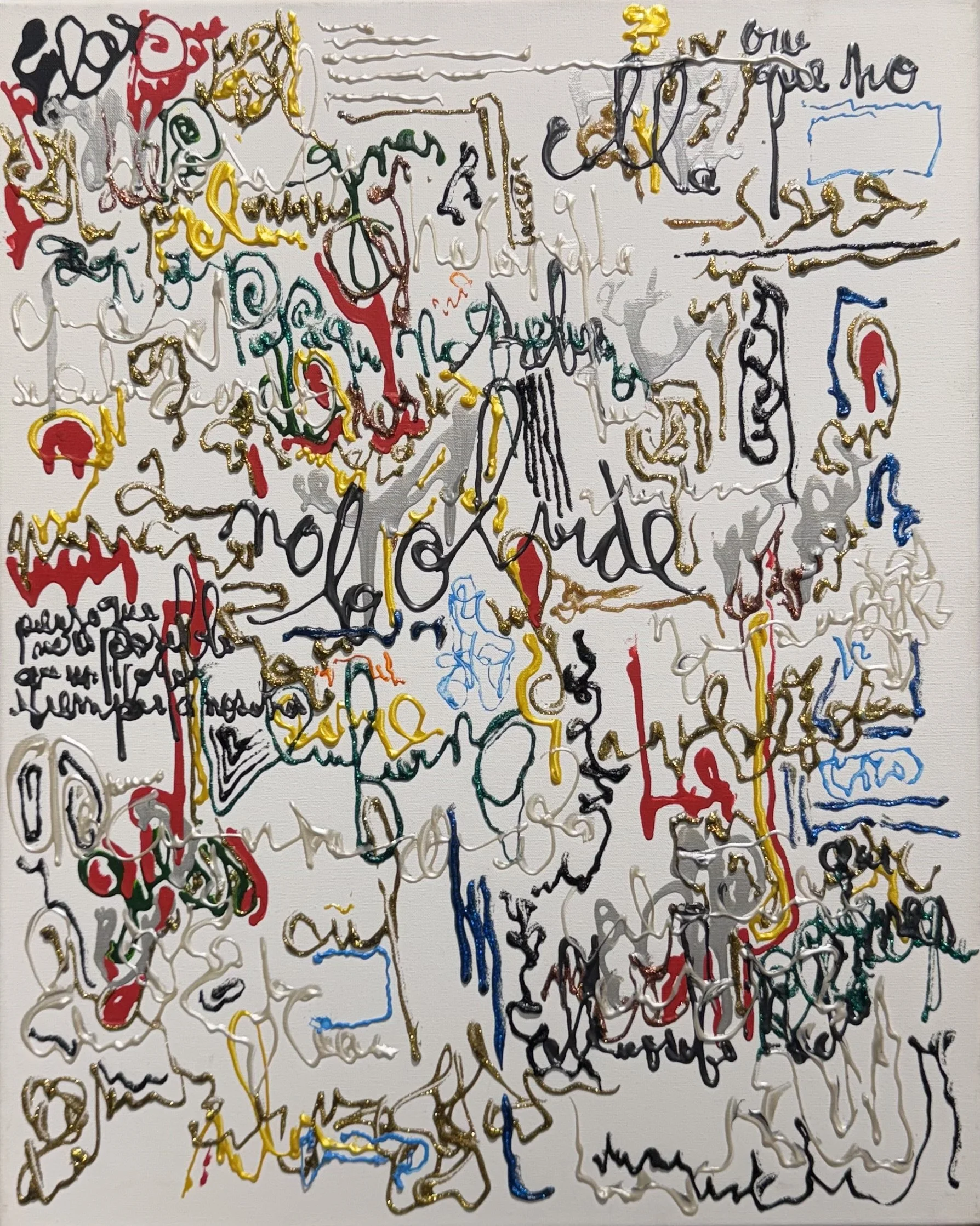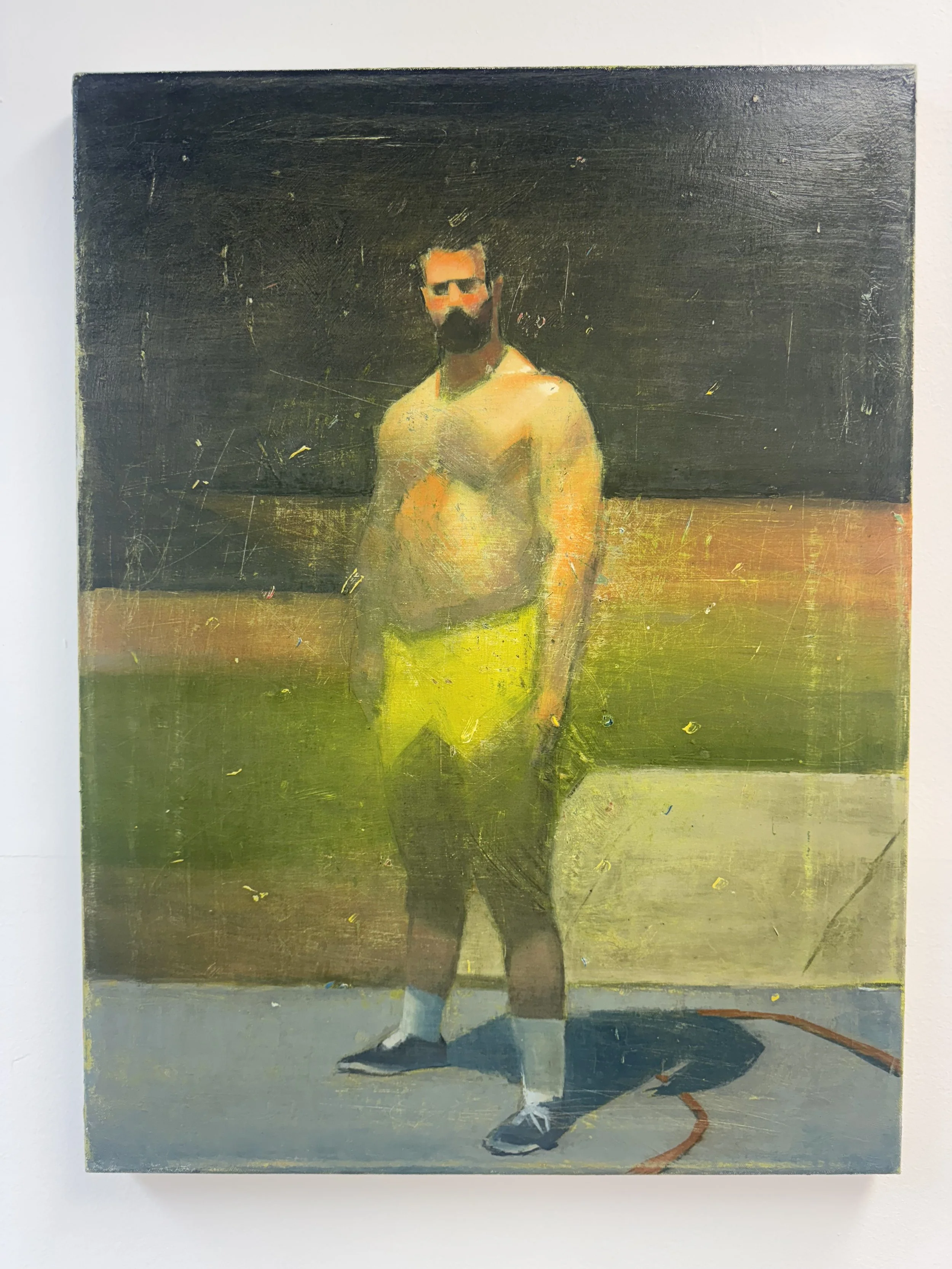High & Low, Old & New: Embracing Dualities in Art
Axiomatic to Charting Transcendence’s practice of art advisory is an unabashed exploration of nuances and dualities that sharpen the eye for art that transcends boundaries.
After all, human expression exists on a spectrum — not a hierarchy.
This edition explores works of art that masterfully blur lines between “high” and “low” cultures, old and new expressions.
Traversing High & Low:
An Enduring Exchange
Mike Kelley (1954-2012), Memory Ware #60 (2010), foam, tinted resin, found jewelry, coffee pot and plastic toys, in the collection of the Marciano Art Foundation in Los Angeles. Kelley’s oeuvre is marked by the obsession of transforming low culture into high art.
"High" culture and art is historically the domain of the elite, i.e. those with power: nobility, scholars, and wealthy patrons.
Examples include (but are not limited to) Eastern calligraphy. Western classical music, Persian poetry, Russian literature, Greek drama, and Baroque opera (the kinds of artforms for which one needs a good education, acquired taste, and often rather privileged access to properly appreciate.)
"Low" culture and art on the other hand is the people’s domain: affordable, accessible, and everywhere — entertainment for the masses. Examples include TV, blockbuster films, pop anthems, Broadway musicals, and the culture of mass consumption.
As an advisor, I’m fluent in "high" culture’s language even as I embrace the “low” in everyday life (which, for me, personally, means scrolling TikTok, obsessing over finding the best hole-in-the-wall Chinese takeout, and collecting plush stuffed animals.)
How “high” and “low” interact and influence one another in contemporary art is an endless source of fascination that frequently comes to light when searching for art with clients.
In the collection of the Virginia Museum of Fine Arts, Burger Chef Interior (1972), oil on canvas, by Ralph Goings (1928-2016), one of the most notable American photorealist painters. Goings is best known for diner scenes and still lifes, meticulously rendered as if to fool the eye into thinking they are photographs.
Mario Ayala (b. 1991), based in Los Angeles, combines Mexican muralism and Southern California automotive painting into fine art. This 2023 acrylic paint on canvas painting is a trompe l’oeil that makes myriad references to San Francisco.
Excerpt from African’t (2011), in the collection of The Broad in LA, by Kara Walker (b. 1969), known her use of high-culture Victorian silhouette craft to confront viewers with 'low' cultural caricatures enacting degrading, violent scenes of American slavery.
Takashi Murakami (b. 1962) is Japan’s international superstar artist, whose recent show at Gagosian New York entitled JAPONISME → Cognitive Revolution: Learning from Hiroshige crosses boundaries between traditional Japanese ukiyo-e woodblock prints and modern anime.
Neon and televisions collide in this 40-foot critique of American media ecology, Electronic Superhighway: Continental U.S., Alaska, Hawaii (1995), by Nam June Paik (1932-2006), known for smashing boundaries between mass culture and institutional art. It is on permanent display at the Smithsonian American Art Museum in Washington, D.C.
Probing Old & New:
A Timeless Dialogue
Noel W Anderson, Untitled (2019), in the collection of the Telfair Museums in Savannah, Georgia. Here the artist has digitally distorted a 1970 photograph of police lineup of New Orleans Black Panther members against a chain link fence and turned it into a machine-woven tapestry, a form that is rooted in painstaking Medieval workshop labor and later, through the Jacquard loom, which laid the ground for innovation of the first computers.
Another very interesting duality in contemporary art involves the dissolution of boundaries between the old and the new.
Old art forms are rooted in tradition: Old Master techniques, historical narratives, and time-honored materials and methods.
Think of ancient Greek vases, Italian Renaissance paintings, and classical myths and dramas. Engaging with such artworks in the present often requires historical context and understanding.
Yet much of new (i.e. postwar and contemporary) art actively dismantles the constraints imposed by the past, rejecting rigid traditions to embrace industrial materials, conceptual risk and evolving mediums. It shifts art from an ancient, obscure to lived experience, privileging raw expression over technical dogma.
The artists presented below master this alchemy: they dissolve boundaries between eras and disciplines, proving innovation and intrigue thrive where "old" and "new" collide.
Raqib Shaw’s (b. 1974) Space Between Dreams - The Pragmatic Pessimist (2022-2023) blends the precision of Mughal miniature and European Renaissance painting with industrial materials such as acrylic liner and enamel on aluminum to depict the contemporary crisis of climate collapse.
Julie Mehretu’s (b. 1970) Six Bardos: Dream State (2018), a 15-color aquatint in which she layers hand-drawn glyphs and algorithmic gestures to visualize Tibetan Buddhism’s transitional states of consciousness.
Anna Weyant (b. 1995), who for a while dated her gallerist Larry Gagosian (b. 1945), merges Golden Age chiaroscuro and muted palettes with contemporary critiques of femininity, pop culture, and digital-age alienation.
Lordy Rodriguez (b. 1976), Florida Cuba (2024), is one of his many hand-drawn contemporary art maps that pair 17th and 18th century cartography with modern-day political commentary.
Rosson Crow (b. 1982), Dallas Trade Mart, 1:13PM, November 22nd, 1963 (2022), spray paint, photo transfer, and oil on canvas. Reviving history painting’s grandeur, Crow employs industrial materials to reimagine the site JFK was headed to when he was shot. Her saccharine palette and destabilized perspective transform a historical trauma into a visceral, contemporary psychological landscape.
Beyond Art Basel:
Summer Shows in Miami
Created by inmates of the South Dakota State Penitentiary (nearly half of whom are Native American) as part of an art therapy program, I Believe Mural (2023), acrylic on rolled canvas, is a highlight of the ICA Miami’s brief exhibition of work by incarcerated persons, Moving Beyond Bars.
August in Miami is the peak of “off-season”—no Art Basel crowds or major openings; only heat, humidity, and quieter galleries. But Miami’s art scene never shuts down.
Over ten years of learning the ropes of exploring Miami’s art scene, I’ve used slower months like these to dig deeper, attending events like the Progressive Art Brunch, visiting institutions like the ICA Miami, the Frost Art Museum at Florida International University, the Pérez Art Museum Miami (among many more, with new museums opening up practically every year), and facilitating studio visits between artists and collectors.
Even now, Miami’s vibrant art pulse continues to beat steadily—less flashy than before, yet continuously evolving and growing with fresh energy and innovation.
Kevin Arrow (b. 1962), who recently gave me a studio visit, has been active as an artist in Miami since the 1980s, a decade throughout which he frequently attended Grateful Dead concerts. He is recognized for his mandala paintings and public art installations in the area.
I was excited to see Yessica Gispert (b. 1984), a Miami-based artist whose work I’ve been following for a while, get her own solo show at the Frost Art Museum. Inspired in part by Cuban Santeria traditions, Gispert uses transformational materials in her work such as in the tondo seen here, Hyperempathy (2023), wax, pigment, wicks, steel and soot.
Wynwood’s Gary Nader Art Centre is a large and unusual museum-cum-gallery that shows the floral compositional paintings and sculptures of Florida-born, half Palestinian, half Dominican artist Soraya Abu Naba’a (b. 1985).
Hiromi Mizugai Moneyhun (b. 1977), who creates contemporary Japanese papercuts, currently has a solo show at the Frost Museum of Art at FIU. This piece is called EMERGENCE, Matsumoto Castle (2021), made of 100lb paper, wood, and acrylic paint.
Allapattah’s Colombian-owned Galeria La Cometa will soon host a solo show by Polish-born, Miami-based painter Justyna Kisielewicz (b. 1984), who explores the complexities of colonial and post-colonial narratives.
Ascaso Gallery, a stone’s throw from downtown and the Adrienne Arsht Center, is the best gallery in Miami to peruse work by top Venezuelan modern artists who embraced geometric abstraction, including Victor Valera (1927-2013).
A floral painting by Belgian artist Harold Ancart (b. 1980), who shows with Gagosian, in the collection of the Gary Nader Art Centre.
Miami-based Beatriz Chachamovits (b. 1986) is an environmentally focused artist, who currently has several artworks, including these two cabinets entitled To have and to hold (2024), in Naples’ Baker Museum of Art’s exhibition Entangled in the Mangroves: Florida Everglades Through Installation.
An untitled 2016 painting by Solange Pessoa (b. 1961), who currently has a solo show on at the Aspen Art Museum, in the collection of the ICA Miami.
Nadia Kaabi-Linke (b. 1978) is a Berlin-based artist whose artwork, including this temptingly uncomfortable sculptural bench, shown by Uruguayan-owned Piero Atchugarry Gallery, challenges social, cultural, political and humanitarian issues, invoking memory and collective trauma.
An untitled Gutta outliner on canvas painting by the late Argentine artist León Ferrari (1920-2013), whose work can be seen at Pan American Art Projects in Little Haiti.
A self-portrait by Cuban-American artist Vincent Granela (b. 1993) recently seen in a group show, The Unusual Suspects, at Florida International University’s Urban Studios in South Beach.


